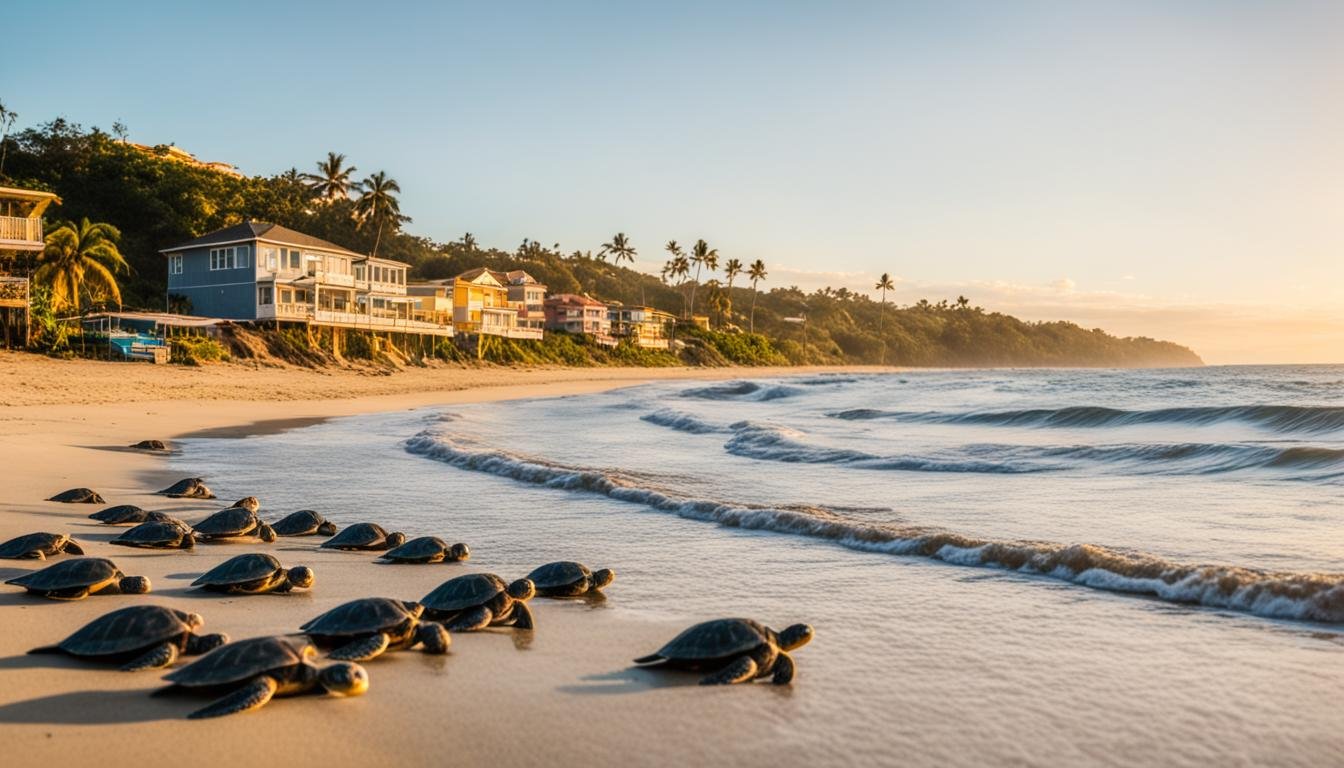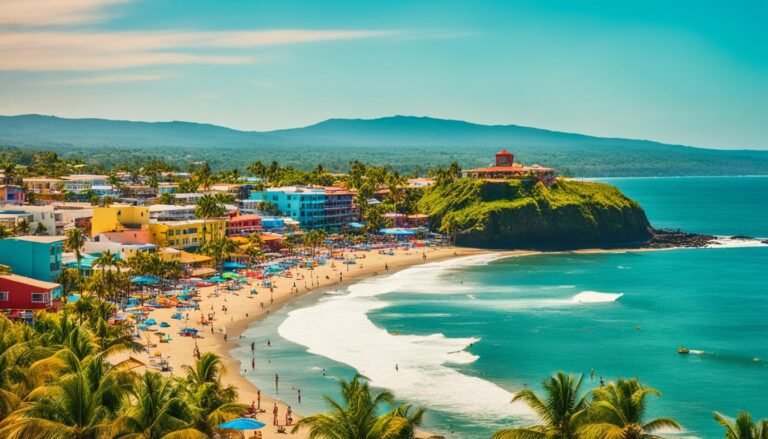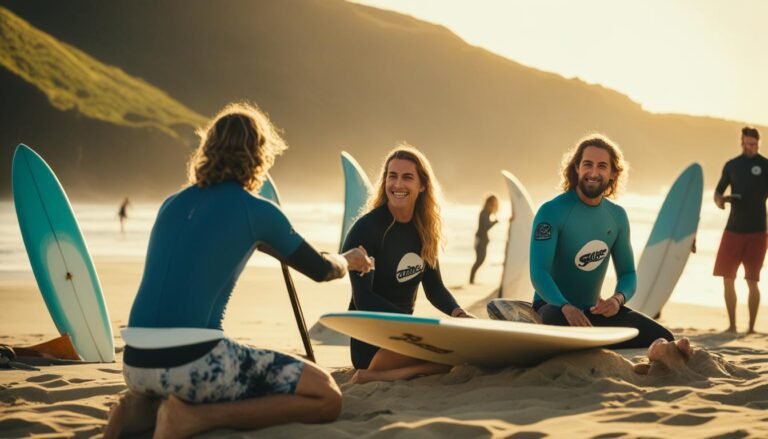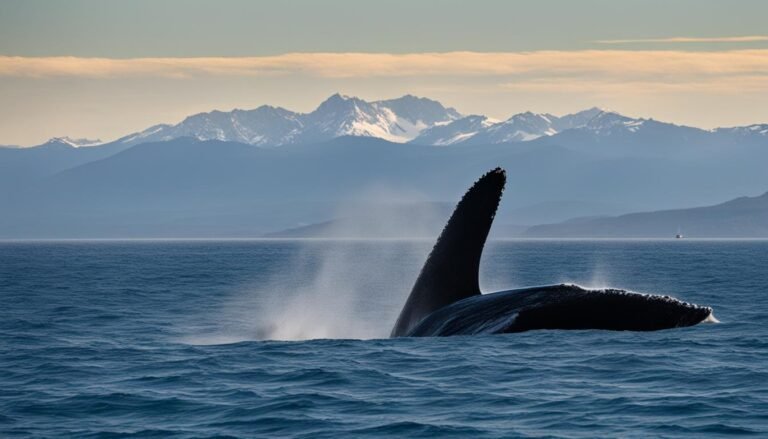Sea turtles, magnificent creatures that they are, play a crucial role in our marine ecosystems. Sadly, all seven species of sea turtles are classified as endangered. The declining sea turtle populations are a result of various factors including hunting, habitat loss, and climate change. But there is hope. In El Salvador, dedicated organizations like Paso Pacifico are leading the charge to protect these precious animals and educate the public about the importance of conservation efforts.
Key Takeaways:
- Sea turtles are essential for maintaining the balance of marine biodiversity.
- Threats to sea turtles in El Salvador include poaching, habitat loss, and climate change.
- Paso Pacifico is a leading organization in sea turtle conservation, employing innovative techniques like the InvestEGGator.
- Research efforts aim to gather crucial data on sea turtle nesting habits in El Salvador.
- Community involvement and partnerships are essential to the success of sea turtle conservation.
Importance of Sea Turtles to Marine Biodiversity
Sea turtles play a crucial role in maintaining the delicate balance of marine ecosystems, making their conservation vital for marine biodiversity. These magnificent creatures contribute to the control of jellyfish populations and the health of coral reefs, shaping the overall ecological dynamics of the ocean ecosystem.
With their feeding habits, sea turtles help control jellyfish populations, preventing them from overpopulating and disrupting the marine food web. By actively consuming jellyfish, they regulate the abundance of these organisms, ensuring the stability of the marine ecosystem.
Coral reefs, often referred to as “rainforests of the sea,” are also greatly influenced by sea turtle populations. As sea turtles graze on seagrass beds, they inadvertently contribute to the health and growth of coral reefs. The seagrass beds act as nursery habitats for various marine species, including fish and invertebrates, which rely on the reefs for survival.
“The extinction of sea turtles would have devastating consequences for marine biodiversity. These gentle giants are crucial in maintaining healthy ecosystems.” – Dr. Marina Sanchez, Marine Biologist
However, the sea turtle population is alarmingly low, with estimates suggesting that only one in 1,000 sea turtles reach adulthood. This decline poses a significant threat to marine biodiversity, disrupting the natural balance of the ecosystem and jeopardizing the survival of other species.
Protecting sea turtles is not just about saving a single species; it is about safeguarding the well-being of the entire marine ecosystem. The extinction of sea turtles would have cascading effects, negatively impacting other marine species and compromising the overall health of the environment.
In the next section, we will examine the various threats faced by sea turtles in El Salvador and delve into the importance of conservation efforts to protect these remarkable creatures.
Threats to Sea Turtles in El Salvador
Sea turtles in El Salvador face numerous threats that put their survival at risk. These magnificent creatures are vulnerable to sea turtle poaching, habitat loss, climate change, and plastic pollution. These factors have devastating effects on their populations and the delicate marine ecosystems they inhabit.
Poaching and Illegal Trade
Sea turtle poaching poses a significant threat to their existence in El Salvador. Poachers target sea turtles for their eggs, meat, skin, and shells, leading to a decline in their population. The illegal trade of sea turtle products further exacerbates this issue, perpetuating the demand for these items in black markets.
Habitat Loss
The destruction of sea turtle nesting and foraging habitats contributes to the decline in their numbers. Coastal development, pollution, and coastal erosion all result in the loss of crucial nesting sites and feeding grounds for sea turtles. Without suitable habitats, their ability to reproduce and find food becomes severely compromised.
Climate Change and Coral Reefs
Climate change has had a profound impact on sea turtles in El Salvador. Rising sea temperatures are disrupting the natural nesting habits of sea turtles, forcing them to seek alternative locations or altering the timing of their breeding seasons. These changes can have serious consequences for population growth and survival.
In addition, climate change has led to the degradation of coral reefs, which are vital ecosystems for sea turtles. Coral bleaching caused by warmer waters directly affects the availability of food sources and shelter for these animals. The loss of healthy coral reefs further exacerbates the challenges faced by sea turtles.
Plastic Pollution
Plastic pollution poses a significant threat to sea turtles in El Salvador. These creatures often mistake plastic debris for jellyfish, a common part of their diet. Ingesting plastic can cause internal injuries, blockages in their digestive systems, and even death. Thousands of sea turtles die each year due to plastic pollution, highlighting the urgent need for conservation efforts.
Conservation Efforts in El Salvador
At the forefront of sea turtle conservation in El Salvador are dedicated organizations like Paso Pacifico, working tirelessly to protect these precious creatures. Our efforts go beyond just raising awareness; we have developed innovative methods to combat the threats that sea turtles face.
“Sea turtles play a vital role in maintaining the health of our oceans, and it is our duty to ensure their survival.”
One such innovation is the InvestEGGator, a tracking device developed by Paso Pacifico. This ingenious device has proven effective in combating turtle egg trafficking, one of the significant threats to sea turtles in El Salvador. By placing the InvestEGGator in turtle nests, we can track and intervene if the eggs are illegally harvested.
Our goal is to expand the use of InvestEGGator across Central America, employing 50 devices to protect and save as many sea turtles as possible. Through this technology, we can gather valuable data and disrupt the illegal trade that puts these magnificent creatures at risk.
But our efforts don’t stop there. We believe in a holistic approach to sea turtle conservation. We organize beach cleaning drives to remove plastic waste that poses a significant threat to sea turtles and marine life. By keeping coastal areas clean, we create safe nesting environments and reduce the risk of entanglement in discarded fishing nets and other debris.
Furthermore, we provide support to local conservation centers, working hand in hand with communities to protect sea turtles and their habitats. By involving the local population and raising awareness about the importance of sea turtle conservation, we empower communities to become stewards of these magnificent creatures.

El Salvador’s Sea Turtle Population Research
The lack of comprehensive data on sea turtles in El Salvador has prompted organizations like FUNZEL to conduct extensive sea turtle research. This research aims to gather baseline data on sea turtle nesting habits and foraging grounds of different sea turtle species.
The project involves investigating over 100 beaches along the Salvadoran coastline, documenting nesting activities, and engaging local communities in data collection. By studying the nesting habits of sea turtles, researchers can better understand their behaviors, threats they face, and inform targeted conservation efforts.
Gathering Baseline Data
Collecting baseline data is a critical part of understanding the current state of sea turtle populations and informing conservation strategies. Researchers are monitoring various parameters during the nesting season, such as abundance, species distribution, and nesting success rates.
Through thorough observation and documentation, researchers can identify important nesting habitats and their characteristics, including temperature, beach slope, and vegetation cover. These factors help determine the suitability of nesting sites and contribute to the overall understanding of sea turtles’ nesting habits.
Sea turtle research in El Salvador plays a vital role in building a knowledge base that can guide targeted conservation actions, protect nesting beaches, and ensure the survival of these iconic marine creatures.
Engaging Local Communities
Collaboration with local communities is crucial in sea turtle research and conservation. Researchers work closely with volunteers, fishermen, and community leaders to gather data, raise awareness, and promote sustainable practices.
Engaging local communities not only contributes to data collection efforts but also fosters a sense of ownership and responsibility towards sea turtles and their habitats. By involving communities in research and conservation initiatives, we can build lasting relationships and create a network of sea turtle advocates.
| Nesting Habit | Population |
|---|---|
| Hawksbill | Approximately 1,000 |
| Olive ridley | Approximately 2,500 |
| Green | Approximately 500 |
Conservation Implications
The data collected through sea turtle research in El Salvador provides a foundation for effective conservation strategies. By understanding nesting habits, scientists can identify and protect critical nesting beaches, implement measures to reduce human disturbances, and mitigate threats like poaching and predation.
Baseline data also supports the establishment and enforcement of marine protected areas (MPAs) to safeguard sea turtle foraging grounds and nesting habitats. Additionally, it aids in raising awareness among local communities, policymakers, and tourists about the importance of sea turtle conservation.
The ongoing sea turtle research in El Salvador is crucial for building a comprehensive understanding of these fascinating creatures. By obtaining baseline data on nesting habits and foraging grounds, we can guide targeted conservation efforts and ensure the long-term survival of sea turtles in El Salvador.
Community-Led Conservation Efforts
Community involvement is crucial in our sea turtle conservation efforts. At the forefront of this movement is ProCosta, a women-led Salvadoran NGO that has successfully transformed nest-poaching into near-total protection through community-led action.
Former poachers and dedicated community members play a vital role in protecting nesting beaches, ensuring the survival of sea turtle populations. This collaborative effort has not only improved nest protection rates but also provided an additional source of income for the participating communities.
“We believe that protecting sea turtle nests is not only essential for the environment but also for the prosperity of our community. By engaging local residents, we create a sustainable framework where everyone benefits.” – Maria Sanchez, Co-Founder of ProCosta
ProCosta’s innovative approach empowers community members and fosters a sense of ownership and responsibility for the protection of these magnificent creatures. This community-led initiative has resulted in a significant reduction in nest poaching incidents, paving the way for a brighter future for sea turtles in El Salvador.
Transforming Lives and Preserving Ecosystems
The impact of ProCosta’s community involvement extends beyond sea turtle nest protection. By actively engaging local residents, this initiative has fostered a deeper connection and understanding of the importance of conservation. It has also opened doors to alternative livelihoods, promoting sustainable economic development in the region.
The community members involved in sea turtle nest protection programs receive training and support in various areas, including nest monitoring, beach cleanup, and ecotourism. This holistic approach creates opportunities for skills development and entrepreneurship, strengthening the community’s social and economic fabric.
The success of ProCosta’s community-led conservation initiatives serves as a shining example of the positive impact that can be achieved when local communities, NGOs, and government agencies collaborate for the greater good of wildlife and habitats.
Creating a Lasting Legacy
Through continued community involvement, ProCosta aims to create a lasting legacy of sea turtle conservation in El Salvador. By empowering communities and fostering a sense of stewardship, this initiative provides an effective and sustainable solution for protecting sea turtle nesting sites along the Salvadoran coastline.
The outcomes of ProCosta’s community-led conservation efforts extend beyond nest protection. The increased awareness and engagement ripple through society, promoting a culture of environmental responsibility and inspiring future generations to continue the important work of safeguarding our natural heritage.
Partnership for Sea Turtle Conservation
The partnership between Wild Earth Allies (WEA) and ProCosta has been instrumental in the recovery of sea turtle populations in El Salvador. With its mission of ensuring that wildlife thrives in healthy ecosystems, WEA has supported ProCosta’s efforts for over fifteen years, working together to protect marine habitats and at-risk wildlife.
“Our partnership with Wild Earth Allies has been invaluable in our mission to safeguard sea turtles in El Salvador. Their expertise and resources have enabled us to make significant strides in marine habitat protection,” says Ana Ramirez, Co-founder of ProCosta.
Both organizations recognize the urgent need to establish Marine Protected Areas (MPAs) to further enhance conservation efforts. MPAs serve as sanctuaries for marine species, safeguarding vital feeding grounds, and nesting sites. By establishing MPAs, Wild Earth Allies and ProCosta aim to create safe havens for sea turtles and protect the delicate balance of marine ecosystems.
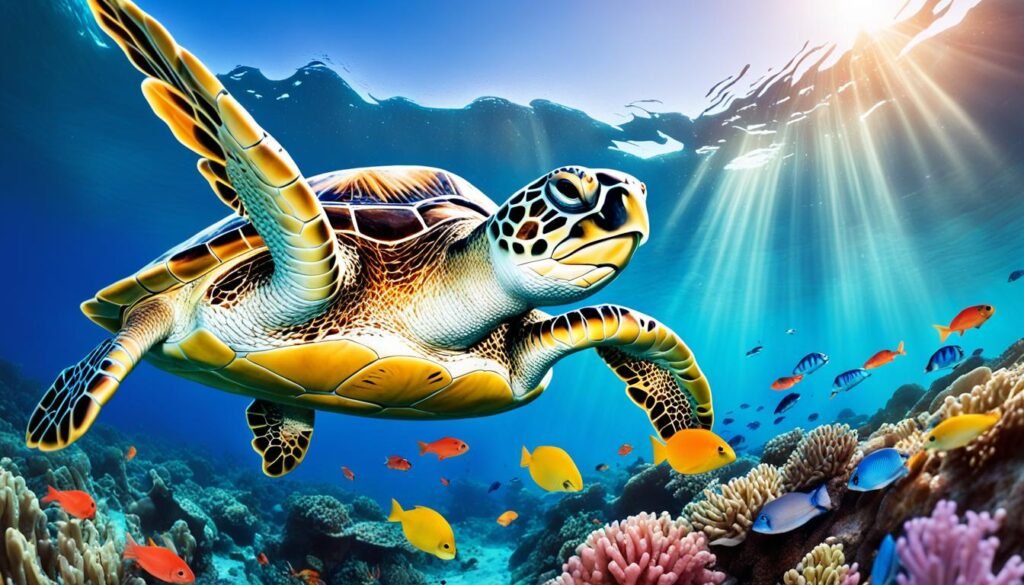
Benefits of Marine Protected Areas
Marine Protected Areas offer numerous benefits, not only for sea turtles but also for the overall health of marine ecosystems. Some key advantages of MPAs include:
- Preservation of critical habitats: MPAs protect important feeding and nesting sites for sea turtles, ensuring their long-term survival.
- Conservation of biodiversity: By preserving marine habitats, MPAs safeguard a wide range of species, promoting balanced ecosystems.
- Environmental resiliency: MPAs contribute to the resilience of marine ecosystems, allowing them to better withstand the impacts of climate change and human activities.
Expanding Conservation Efforts
Wild Earth Allies and ProCosta are committed to expanding their conservation efforts and establishing a network of MPAs along the Salvadoran coastline. These MPAs will provide comprehensive protection for marine habitats and serve as corridors for the movement of sea turtles and other marine species.
| MPA Name | Location | Size (square kilometers) | Key Features |
|---|---|---|---|
| Playa La Costa MPA | La Libertad | 45 | Protects critical nesting beaches and supports sustainable tourism. |
| Golfo de Fonseca MPA | La Union | 80 | Preserves important foraging grounds for sea turtles and supports local fishing communities. |
| Conchagua MPA | La Union | 65 | Conserves diverse marine habitats and protects vulnerable species. |
These MPAs will not only provide sanctuary for sea turtles but also promote sustainable tourism and benefit local communities by creating opportunities for environmentally conscious economic growth.
Through their collaborative efforts, Wild Earth Allies and ProCosta are making significant strides in marine habitat protection and ensuring a brighter future for sea turtles in El Salvador.
The Significance of Sea Turtle Conservation
Sea turtle conservation is essential not only for protecting these endangered species but also for maintaining the health and balance of marine ecosystems. Sea turtles play a vital role in carbon sequestration, contributing to the well-being of seagrass beds and coral reefs. The preservation of sea turtles also promotes environmental protection and fosters sustainable tourism that benefits coastal communities.
The Role of Sea Turtles in Carbon Sequestration
Sea turtles contribute to carbon sequestration by enhancing the health and productivity of seagrass beds and coral reefs. When sea turtles graze on seagrass, they help stimulate new growth and maintain the health of these marine ecosystems. Seagrass beds act as highly effective carbon sinks, absorbing and storing carbon dioxide from the atmosphere. By protecting sea turtles, we ensure the preservation of seagrass habitats and the continuation of their crucial role in mitigating climate change through carbon sequestration.
Environmental Protection and Sea Turtle Conservation
The conservation of sea turtles is closely linked to broader environmental protection efforts. By preserving sea turtle populations, we help maintain the biodiversity and ecological balance of our oceans. Sea turtles serve as indicators of the overall health of marine ecosystems. Protecting their habitats from pollution, habitat loss, and other threats ultimately safeguards the well-being of countless other marine species that rely on healthy ecosystems for their survival.
Promoting Sustainable Tourism through Sea Turtle Conservation
Sea turtles serve as flagship species for promoting sustainable tourism in coastal communities. Many locations around the world are popular tourist destinations due to their sea turtle populations. By ensuring the protection and conservation of these magnificent creatures, we can attract eco-conscious tourists who are eager to experience and support responsible wildlife tourism. Sustainable tourism practices generate economic opportunities for local communities while maintaining the long-term viability of natural resources.
Investing in Sea Turtle Conservation for a Better Future
Investing in sea turtle conservation is an investment in a better future for our environment, communities, and planet. By protecting these mesmerizing creatures, we contribute to the preservation of marine biodiversity, combat climate change through carbon sequestration, and foster sustainable tourism that benefits local economies. Through collective efforts and ongoing support for organizations and initiatives dedicated to sea turtle conservation, we can ensure the continued existence and well-being of these magnificent creatures for generations to come.
Conclusion
Protecting sea turtles in El Salvador is crucial for the preservation of marine biodiversity. The decline in sea turtle populations poses a threat to the delicate balance of our coastal ecosystems. Fortunately, various conservation efforts have been put in place to combat this issue.
Community-led initiatives and innovative tracking devices, such as the InvestEGGator, have shown promising results in sea turtle conservation. These efforts not only protect sea turtles but also promote wildlife protection and coastal conservation. By working together, we can ensure the long-term survival of these beloved creatures and the health of our oceans.
However, our work is far from over. Continued support and environmental awareness are essential to sustain these conservation efforts. By supporting organizations like Paso Pacifico and ProCosta, we can contribute to the ongoing sea turtle conservation efforts in El Salvador. Let us all play our part in preserving the magnificent sea turtles and safeguarding the natural beauty of our coastal environments for future generations.



